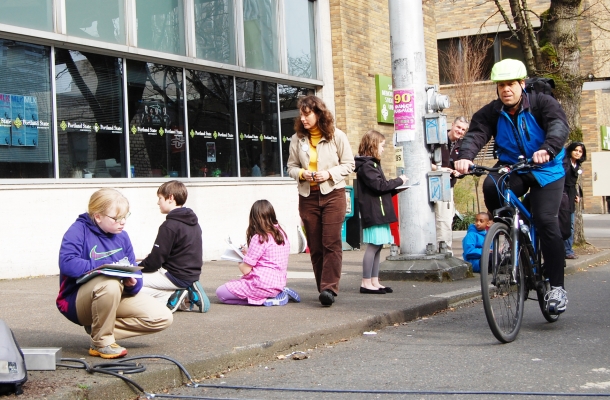The Beaverton-Hillsdale Highway, pegged as one of Portland’s high-crash corridors, already attracted the attention of city officials worried about safety. They got more help from Portland State University students during the recently completed term.
Students from civil engineering professor Christopher Monsere’s transportation safety analysis course formed six groups, each studying a piece of the corridor. They presented their findings and recommendations during the course’s open house March 19. The presentation drew officials from local agencies interested in improving corridor safety, including the city of Portland, the TriMet transit agency and the Metro regional government.
The student work dovetails with the city’s own examination of the highway corridor, completed in February. In some cases, as with the Shattuck Road intersection, the students came to many of the same conclusions as city officials, said Wendy Cawley, traffic safety engineer with the Portland Bureau of Transportation. Both found that narrowing the crossing distance could make that intersection safer for pedestrians.
One group looked at the Hillsdale area, recommending a “road diet” approach and other livability-minded changes. While it’s “probably a little more than the city will be able to recommend and handle,” Cawley said, the work has inspired...
Read more






